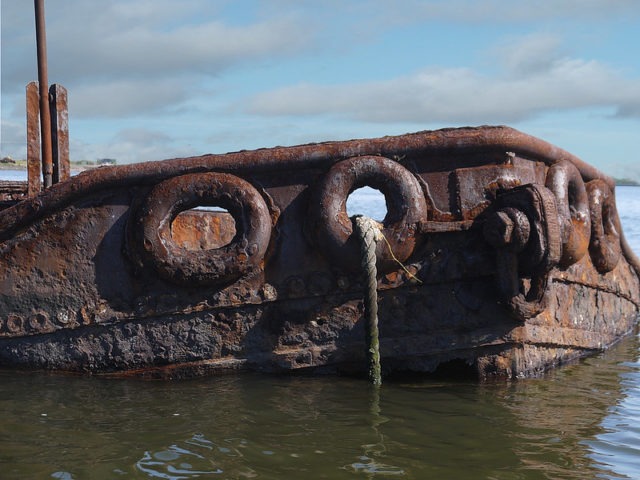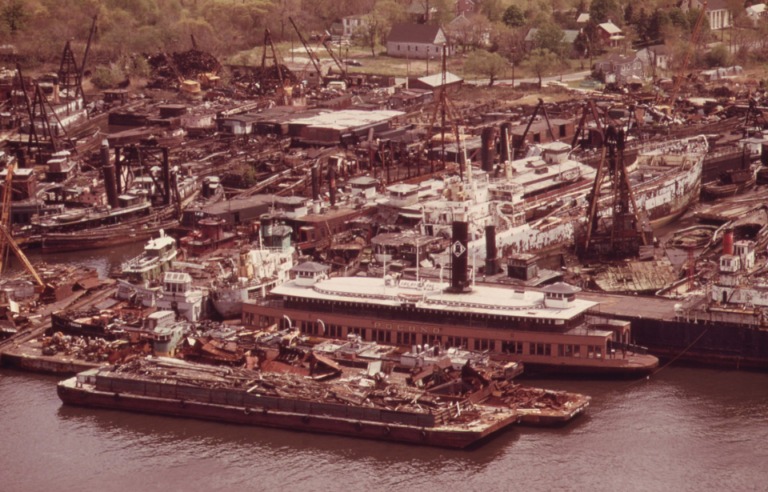
Have you ever visited a tugboat graveyard? Probably not. However, if you’re willing to travel to Staten Island and venture past the “no trespassing” and “beware of dog” signs, you can view one of the saddest and most interesting scrapyards in the United States. It’s home to ships dating back to World War II and other decades of the 20th century.
The creation of the tugboat graveyard
Staten Island‘s tugboat graveyard was created by John J. Witte in the 1930s. Located in the Arthur Kill waterway between the west shore of the island and New Jersey, it was intended for the dismantling and salvaging of boats and their parts.
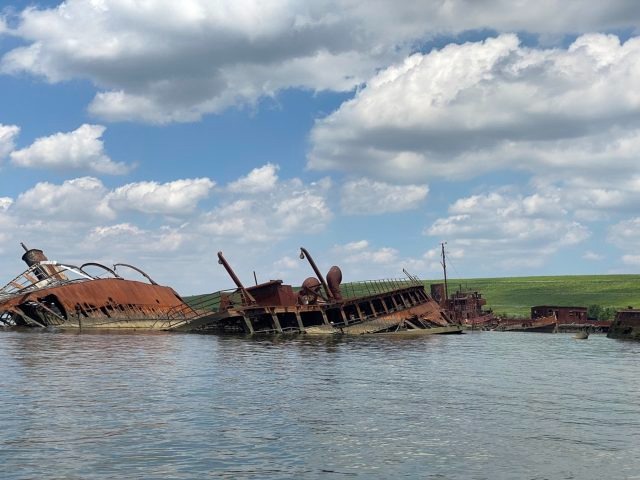
Witte’s business, the Witte Marine Equipment Company, initially collected smaller harbor ships and tugboats. Following WWII, he purchased a host of outdated sea vessels, with the intent of harvesting them for parts. However, he was doing so at such a pace that the ship-breakers struggled to keep up. This issue was exacerbated by local residents using the area to dump their old dinghies.
Witte managed the scrapyard until his death in 1980, after which his son-in-law, Joe Coyne, took over.
Historic ships left to rot
Over the years, Staten Island’s tugboat graveyard has been known by a variety of names, including the Witte Marine Scrap Yard, the Arthur Kill Boat Yard and, as of 2014, the Donjon Iron and Metal Scrap Processing Facility. It has since been recognized as an official New York City-area dumping ground for old vessels, with the majority dating back to various decades of the 20th century.
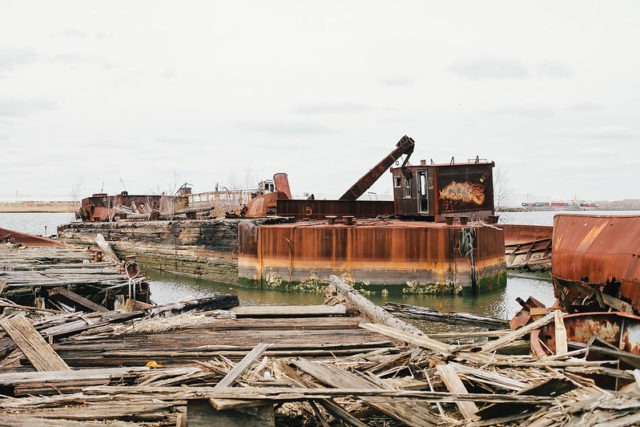
Due to the variety of boats, the scrapyard has also been called an “accidental marine museum.” Among the historic vessels left to rot in the water was the WWII-era submarine chaser USS PC-1264, which was one of only two US Navy ships during the conflict to feature a predominantly African-American crew.

There’s also the Abram S. Hewitt, a former-New York City Fire Department fireboat that served as a sea-based command post following the sinking of the passenger ferry PS General Slocum in 1904. The disaster resulted in the deaths of over 1,000 people.
According to an article published in the New York Times in 1990, there were 200 boats in the tugboat graveyard. However, kayakers and urban explorers who have recently visited the location have reported that fewer than 25 remain.
A shallow, mud-filled waterway
While the tugboat graveyard may appear to be a polluted section of water off the coast of Staten Island, a closer look will reveal the rotting and rusting exteriors of ships lodged in mud. Over the years, their useful parts have been stripped or stolen, leaving behind hollow metal and wood shells that look like a jumbled mess.
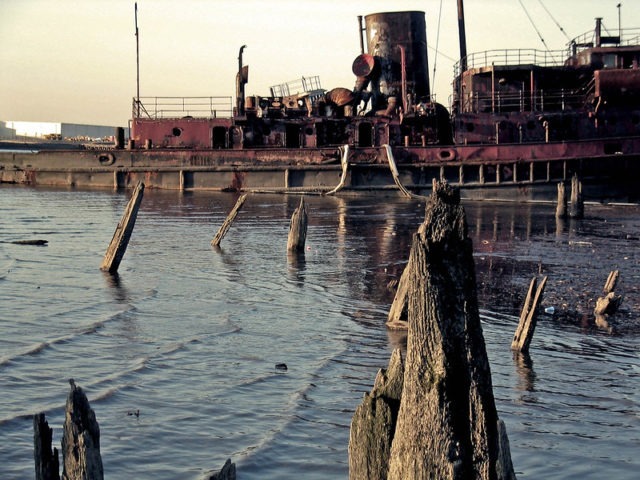
Because of its eerie appearance, the location has become a go-to for those seeking adventure. This resulted in the creation of a makeshift path crafted from wooden planks and street signs that travel along the edge of the water. It should be noted, however, that this is not an official pathway and anyone found there is at risk of coming into contact with law enforcement.
